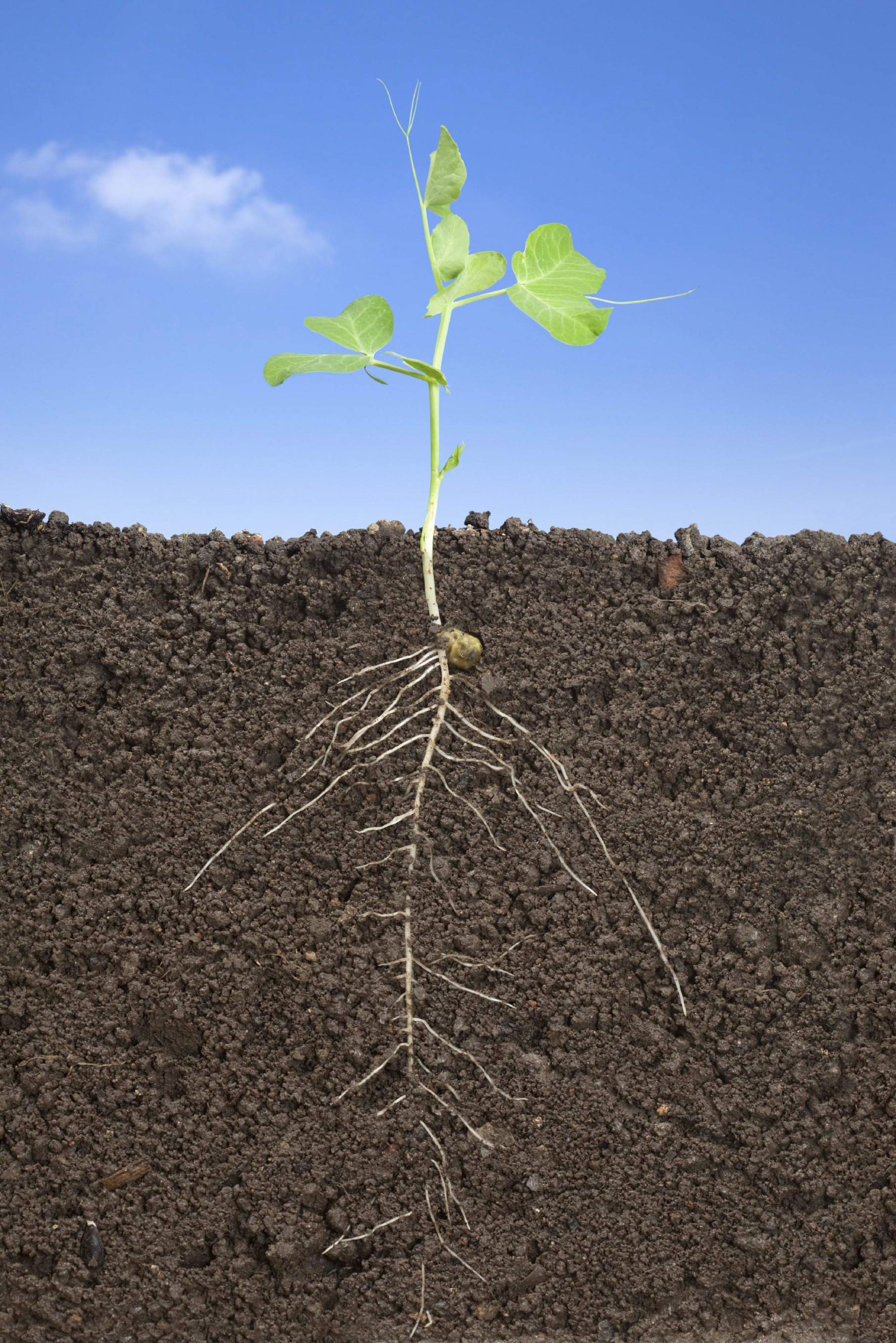Virginia Tech partners with Smithsonian to discover deeper link between soil microbes and plants

In a recent study published in the journal Plant and Soil, Mark Williams, an assistant professor of horticulture in the Virginia Tech College of Agriculture and Life Sciences, and his collaborators at the Smithsonian and other institutions discovered that microbes in soil function symbiotically with plants, much like the 3 billion microbes in the human gut interact with the body.
“The study is consistent with the idea that there are complex but fundamental feedbacks between these diverse systems of soil microbiota and plant species,” said Williams. “These plant-microbial-soil interactions ultimately determine how ecosystem’s breathe life into the earth’s biosphere.”
Some of the interactions that occur in the soil microbiome — the combined genetic material of the microorganisms in soil — have not always been as readily apparent until now.
Understanding the deeper functionality and growth processes of the soil microbiome has the potential to provide unprecedented insight as to how to preserve and maintain soil health or other environmental challenges such as climate change.
“Whether the issue is climate change, carbon sequestration, or the development of sustainable agricultural systems, our ability to understand and predict plant-microbial processes is crucial for sustaining environmental health,” said Williams.
Though bacterial types were highly dynamic during early ecosystem growth, researchers found it surprising that bacterial communities tended to stabilize after undergoing a growth process akin to birth, adolescence, and eventually plateauing as the soils reached middle age. Recovery time for soil microbial communities from perturbation tends to be slow, which indicates future attempts to reverse damage will potentially prove challenging, Williams said. However, the flip side of this is that efforts to make soil healthy by mimicking what occurs in nature could actually have longer lasting effects.
For purposes of the study, the team chose to examine the Haast Chronosequence in New Zealand to determine if soil bacterial community structure and diversity co-occurred with natural changes in soils and plants. A chronosequence is a sequence of different soils formed at different times located in the same area.
“While fairly resistant to change under natural conditions, research in our group suggests that agriculture and management practices cause huge shifts to microbial communities," Williams said.
The Haast Chronosequence also provided a unique opportunity to establish a baseline for studying soil microbiomes in general due to its lack of plants that are capable of symbiosis with bacterial nitrogen fixers. In their place, root-surface nitrogen fixers were at work in the soil, indicating that the soil microbiome has some level of flexibility depending upon the environment.
Even more amazing to Williams was that the life cycle of soil was consistent with a chronosequence in the far away state of Michigan.
“We observed patterns that are fundamental — whether it’s New Zealand or the United States,” he said. “Just knowing that we have patterns of development consistent across sites suggests that important ecological processes are at play and will be useful for understanding and managing how these fundamental life forms, plants and microbes, drive the cycles of earth’s biosphere.”
Researchers found that as the soil in the Haast ecosystem developed during its youthful stage through hundreds of years, changes in bacterial communities also corresponded to changes in soil properties including total phosphorus, carbon-to-nitrogen ratio, and pH. However, it was the overall relationships indicative of feedbacks in a complex ecosystem that seem to be the biggest lesson for science.
This study, conducted in partnership with the Smithsonian Tropical Research Institute and co-authors Ben Turner, Kamlesh Jangid, William Whitman, and Leo Condron, examined the development of the Haast in New Zealand. In addition to a partnership with the Smithsonian, Williams research is also funded by competitive grants from the National Science Foundation, Population and Community Ecology Program, the U.S. Department of Agriculture-Agriculture and Food Research Initiative, Soils and Soil Processes program, and Virginia Tech’s Institute for Critical Technology and Applied Science and the Fralin Life Science Institute.
“Understanding how nature works and then perhaps accelerating that process to a more stable and sustainable state in human-based ecological systems was a primary reason for this study,” said Williams.
Written by Amy Loeffler.





